“The future” cannot be “predicted,” but “preferred futures” can and should be envisioned, invented, implemented, continuously evaluated, revised, and re-envisioned. —Jim Dator, Hawaii, 1995
This paper introduces a framework called Target Worlds, with which I hope to offer an alternative to putting users, personas or target groups at the center of innovation. Instead I want to promote a more prudent approach that balances social, environmental, technological and financial sustainability in innovation.Target Worlds thereby tries to overcome issues of focus, scalability and responsibility in innovation by tackling the core of the problem: the targets of innovation work. The framework merges concepts of investigating ‘worlds’ today, identifying desirable futures for tomorrow and worldbuilding as a hands-on approach resulting in target worlds as new point of departure for innovation teams. This paper serves as a recipe for building target worlds offering a step-by-step guide for innovators and anthropologists to follow.
INTRODUCTION
This paper is a reaction to our current era which pushes for a more responsible and considerate way of dealing with resources, data and each other. It aims to recognise that we all share one planet while also having our own districts to move through, several groups of society we belong with, and different life phases to find ourselves in. We are all part of multiple intersubjective worlds that overlap and interact with those of others. This means then, that centering innovation around THE user, THE target group, THE future, or THE world is naturally a limited point of view, representing nothing but a simplified imagination of something that never exists in an as straightforward manner as it is presented. With Target Worlds I try to address and hope to overcome such limitations in, both, scope and depth. Instead of the classic problem-solution gap, I suggest an analytical approach paired with a worldbuilding narrative to innovation as starting point and as continuous reference before narrowing down in scope and hone in on a specific idea, solution or user (hero’s) journey.
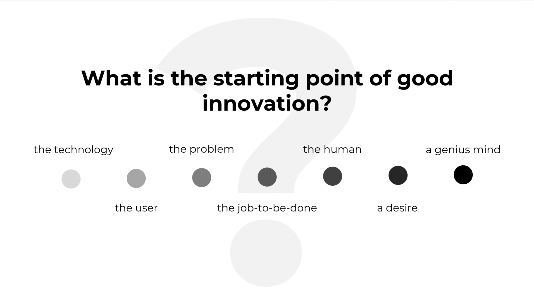
Figure 1. What is the starting point of good innovation?
In a way the paper leads back to the roots of anthropology while also pushing it towards the core of new futures. Anthropology has always been one of the key disciplines to discover, understand and describe the everyday worlds of people. I argue that we can leverage anthropology to help innovators immerse themselves in future worlds too. Similar to grand authors and worldbuilders like J.R.R Tolkien (Lord of the Rings), J.K.Rowling (Harry Potter), or George Lucas (Star Wars), who deeply immerse their audiences in their books and movies, might we also be able to draw innovation teams into desired future worlds that we ground in the local lifeworlds of people today and use this as a starting point?

Figure 2. Symbols of great worldbuilders
Certainly, there are many ways to materialize futures other than books and movies. These forms of materialization, though, will not be the focus of this paper. Rather it is the investigation and identification of what is desirable in the first place, not from an individual point of view, but from the intersubjective collective perspective of a local single- or multi-sited and multidimensional world.
As the title suggests, this paper tries to present something similar to a process or guide rather than a single call to action. Target Worlds is meant as a starting point and continuous guiding star for innovation teams to look up to, yet offering something more concrete than a vision, more grounded than a speculative future, more holistic and inclusive than a persona or target group, more than a problem but not yet a solution. With this paper I hope to provide a recipe of how to cook up a target world, which leaves some flexibility and freedom for the innovator to substitute or add single ingredients as long as the key elements remain. In that sense this paper partly functions as a step-by-step guide – knowing that many innovators would love to have yet another one to trust in – but the outcome, the target world, will only function as a compass showing the direction, not the exact path of how to get there. This paper is a recipe for constructing target worlds but the cooking process (the innovation process) is entirely up to you.
Similar to the fictional worlds of Star Wars, Lord of the Rings, Harry Potter, or an open-world game, which can grow indefinitely in scope and detail, target worlds are always expanding, get adapted along the innovator’s journey and can always gain in scope and richness. In that sense, it is not a static vision statement that gets formulated at the beginning of a project. Rather it is the future version of the world that you constantly discover and reimagine to live in, the world version to which your company or team wants to contribute to. With every research study you conduct and every product iteration you run, you uncover a new region of your world’s map that was hidden to you before, revealing new opportunity spaces to act on, but also reshaping your game strategy to play by.
As a final note to the reader, my thoughts in this paper are fresh and need continuous shaping. In that sense, this paper – sort of being my own target world – is not definite, never-ending, and (re-)starts at the moment you (re-)engage with it. I hope it sparks interest, inspires new thinking, gets experimented with, criticized and improved, and gets more beautiful as it ages.
PROBLEMS IN INNOVATION WORK
Innovation is messy, non-linear and fuzzy. Teams have to deal with a lot of uncertainty – not only in the early stages of a project but also in later stages when building the first prototype, MVP or next version product.
The Why
Aligning on a common vision is difficult too. People agree on vision statements after half-day workshops going through the Golden Circle and other tools, where they frame and reformulate the Why over and over again. While the team might remember the statement word by word, it often lacks the imagination of what the vision could actually look like and how it might integrate into future worlds. Having witnessed this myself, innovation teams often end up juggling with words, eventually finding themselves with the fanciest, shortest, yet most abstract statements which are no more than empty phrases and catchwords.
Innovation teams reflect too little on how their preferred future world will facilitate some of the people’s desires, aspirations and values that will inhabit it. What is the richer picture of world-famous Why examples like the one of Apple stating: “We believe in challenging the status quo, and doing things differently.” (Sinek, 2009) So what? What does this say about anything? What world does this statement allow us to imagine? How does this contribute to any kind of human values, aspirations or cultural histories and identities being embodied by people living in targeted future worlds?
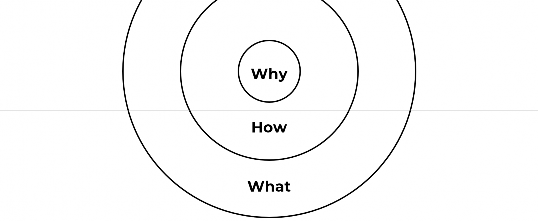
Figure 3. Simon Sinek’s Golden Circle (Sinek 2011)
What Simon Sinek (being an anthropologist himself) tries to point out in his best-selling book and TED-talk was not the actual why-statement but the shared belief people connect to as the starting point for a commercial relationship. The shared belief, cause or purpose is what connects people and is the basis for a strong relationship and for loyalty. The exploration of these shared beliefs, though, must go beyond brainstorming and the manifestation beyond a single statement, post-it or slide.
Assumptions & Adoption
The reason why so many innovators struggle with the Golden Circle, in my opinion, is the same reason why many fail to ever produce truly meaningful innovation. At the heart of this lies the missing understanding of people and the missing awareness of how wrong our assumptions about people often are. We (innovators) fail to see the relations between people and the socio-technical networks they are part of as well as their interpretation of their everyday lives, their aspirations and their desired futures. Too often, we (innovators) simply project our own assumptions onto the lives of others. As a result, our idea and how an innovation could potentially overcome a problem we thought we found fails – not because of execution but because we have taken the wrong direction from the very beginning. The innovators’ assumptions and intentions rarely – if ever – equal user adoption.
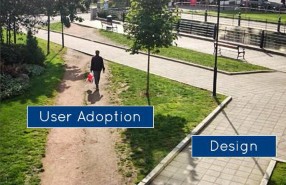
Figure 4. User adoption (Source: westbrook.co.uk)
The point is that the innovator’s understanding of a problem evolves through-out the innovation process and that an innovator never gets to a complete representation of the problem. This is what has been described as the problem-solution-paradox:
We cannot think about solutions until we understand the problem, and we cannot understand the problem until we think about solutions. (Wendt 2015)
What Wendt and others before him (e.g. Heidegger, Merleau-Ponty, Ihde, Verbeek etc.) have built up sophisticated philosophical thoughts and frameworks over decades, seem to be in line with what entrepreneurs and innovators experience in daily business. Despite well-established frameworks like Lean Startup and Riskiest Assumption Testing leading to numerous pivots, innovators fight an unforeseeable ocean of user adoption possibilities.
A chair e.g. can be used as a piece of furniture to sit on, a ladder to step on, or as a weapon to attack someone. Similarly, Facebook helps to connect people and brings them closer together (as intended in Facebook’s vision statement) but also allows for and even enables political misinformation and polarization. Often having some sort of underlying wicked problem, solutions provide a stage for new problems to arise. Thus, it is the innovator’s moral obligation to weigh whether everyone is better off with the new problems at hand. For example, will autonomous vehicles really improve city traffic overall? Who is to decide – the rider watching TV in the future or the cyclist getting run over today? Do e-scooters support our mobility goals to reduce carbon emissions, free up parking lots in cities, etc. or have they created more problems than positive impact, considering the high number of often quite severe accidents and scooters lying around at every side-walk, thus blocking city space and posing a risk for others? Serving one target group, hurting another group that was forgotten or ignored in the innovation process.
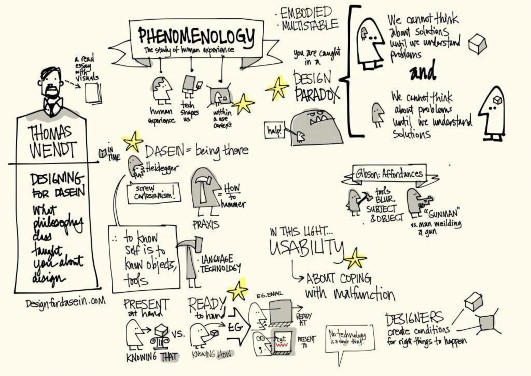
Figure 5. Visual illustration of Thomas Wendt’s Designing for Dasein (Fiasova 2018)
Emerging Technologies
Even though methods like forecasting and scenario building and newer approaches including speculative design, design fiction and experiential futures have emerged as alternative points of departure for innovation practice, they seldomly investigate what would be desirable local worlds for the collective, as the basis to identify artefacts and activities as a form of contribution to these worlds. Most futures-oriented practices either analyse trends and signals, study the effect and adoption of emerging technologies (English-Lueck and Avery 2020, Pink 2019) and artefacts in the making (Auger 2013), frame visions, hypotheses, how might we … questions, and future user journeys (see e.g. design thinking or lean-startup) or study “future as an alterity of the present” (Pink 2017).
James Auger has separated formerly mentioned approaches into two categories: First, speculative futures, extrapolations of the contemporary, being used to “test potential products and services (…) before they exist” (Auger 2013). The second category is alternative presents, which ask “what if” artefacts were applied by different ideologies and speculating about how the present was different (ibid.). In both categories, the technological artefact stands at the center, is the point of departure and of continuous reference. Within the anthropological community, related work has been referred to as Ethnographic Futures Research (Textor 1980), Ethnographic Experiential Futures (Candy and Kornet 2019), Speculative Ethnography, Anticipatory Ethnography/Anthropology (English-Lueck and Avery 2020), Futures Anthropology (Salazar et. al. 2017), Anthropology of the Future (Bryant and Knight 2019), amongst others. These have surfaced more regularly throughout the last two decades but started to shape already from the 1960s onwards (English-Lueck and Avery 2020). Aside from a few outliers, though, much of the futures-oriented practices overlap or interact with design and user experience, as they mostly look into “unintended consequences of technological use on social life” to eventually “imagine the future use of a service, product, architectural form, or land space” (ibid.). In my opinion and experience, most effort in innovation work is spent on figuring out how new technologies can lead to new tools, gadgets, experiences in the future. Too often emerging technologies are the starting point. Too little do we invest in exploring, understanding and inventing future worlds which we collectively would enjoy to live in.
Scope & Inclusivity
Ideally, I argue, the effects of any innovation would always be measured against the desired worlds we actually want to live in. Focusing innovation efforts on solving problems, pain points, needs, and jobs-to-be-done of isolated and often rather fictive user personas proved efficient as innovators had structures at hand to guide them through the process in a few days or weeks. Yet, they have turned out to be shortsighted, often treating symptoms without understanding the underlying complexity, nor steering towards better futures from a collective point of view. Innovation needs to be more inclusive from a broader perspective. The following funnel shows the development of centeredness in innovation.
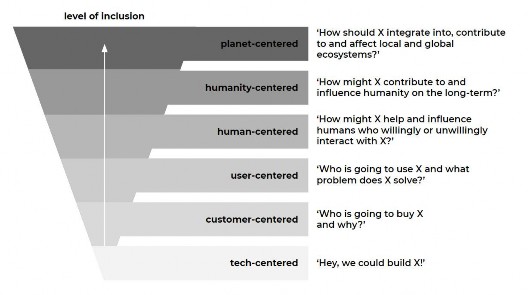
Figure 6. Centeredness in innovation
Critically, while many forerunners argue for the advancement of centeredness: to be user- or human-centered, and to start with a problem or need instead of the solution, many companies still struggle to even understand their existing customers. Although more and more leaders realize the value of human insights for their businesses, many fight the often brutal reality of changing markets, growing competitors and unexpected disruption, which leaves little space to think about sustainability or social inclusivity. This means, what we need, now more than ever, are new frameworks that allow for holistically sustainable innovation that balances not only social and environmental but also economic aspects.
This follows the arguments and discussions others referred to as ‘complex adaptive systems design’ (Slavin 2016), ‘humanity-centered’ (Donelli 2016, Wren 2018, Kikin-Gil 2018, Palaveeva 2018), ‘planet-centered’ (Frick and Luebkeman 2017, Kwame 2018, Impossible 2018, Schubert 2019, Jackson 2020, Patel 2020), ‘the design responsibility revolution’ (Grillo 2020), ‘post-human-centered’ (Payne 2020) and other terms (Fry and Nocek 2020). Thus, solving a simplified problem is not good enough anymore (ibid.). The point is that our scope, scale and focus in innovation work is experiencing several shifts towards more complex systems involving a multitude of not only human actors, which we need to involve and reflect on before developing the next product or company.
We have to be more inclusive and more holistic in the values and goals that we set out for our innovation efforts. The UN’s 17 Sustainable Development Goals provide a great start for this on a macro level, but I believe there is a larger opportunity for us to go beyond, and draw richer pictures for the micro and meso level, which I will argue for throughout this paper.
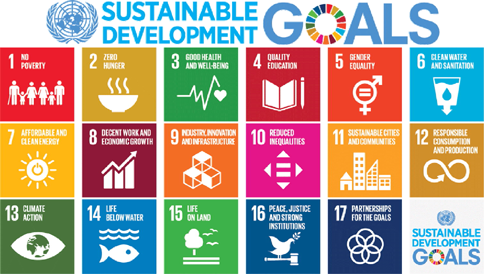
Figure 7. The United Nations Sustainable Development Goals (Source: unoosa.org)
Depth & Interdependency
Next to the problem of holism and the need to broaden our scope for inclusion, there is also a problem with depth and contextual richness. Case (2011), Slavin (2016), Haines (2017), Glabau (2018), and Payne (2020) argue for more awareness about the increasing complexity of human-technology entanglements and for studying these systems with a multitude of approaches. When innovating then, we need to consider not just the meta-persona including gender, job, income, interests and apps, but the nodes of the system within which a person develops and represents a large number of different identities playing certain roles in the context of the system. Not only do we have intersubjective lifeworlds in the physical world, but also in virtual ones – which Case (2011) calls “second selves”. Haines (2017) pointed out that in our era of machine-learned and algorithm-trained solutions, these machine representations of multiple individual identities start to live on in their own ways, infusing a sort of technological representation of human selves into algorithms, and thereby mixing a priori values from the designers and developers of the solution with those ones of its users.
In a sense, we train algorithms and algorithms train us through the broad network of technological touchpoints in our everyday life. Thus, when we innovate, we have to develop literacy for how we shape this system and how it shapes our worlds in turn. It is this highly complex phenomenon that we need to reflect on when envisioning futures, for which aspirations and desired identities are pathing the way. I think – or maybe I fear – that this kind of reflection on the effects humans have on technology and vice versa from a micro-level upwards has little room in typical innovation frameworks – often not going much beyond the subjective feeling of the innovator. Thus, when building products and services that should contribute to better futures, we have to understand these human-technology relations, interdependencies and alternating influences, into which our innovations will ultimately get embedded.
Responsibility
With great power comes great responsibility, and clearly it is the innovator’s responsibility and power to decide on who to involve and who to exclude in the process of innovation. Modern theories and frameworks such as actor-network-theory, phenomenology and postphenomenology argue (even if in slightly different ways) that we are the result of our surroundings; that we make decisions as the consequence of the socio-technical networks we are part of; and that we think and act in certain ways based on past experiences which we embody in our everyday life. Decisions in innovation are, therefore, the result of the production and translation of knowledge by networks of human and non-human actors (Latour 1987 & 2005). Knowledge in ANT is nothing more than the result of a “lot of hard work in which (…) bits and pieces (…) are juxtaposed into a patterned network” (Law 1992), which the innovator influences in every step. Consequently, innovation too is only a “process of translating (forcing, bending, seducing, organizing) a multitude of elements into the hands of a few powerful representatives” (Blok and Elgaard Jensen 2011). Every innovator, thus, is only the result of personal past experiences and personal networks of actors he or she is integrated into (Andersen et al. 2015).
With the privilege to be one of the powerful representatives, the modern innovator is often more of an innovation facilitator, staging a temporary space for creation, as Clausen and Gunn have argued earlier in their piece called From the Social Shaping of Technology to the Staging of Temporary Spaces of Innovation – A Case of Participatory Innovation (Clausen and Gunn 2015).
It is the collection, transformation and translation of cross-disciplinary insights into knowledge objects, actions and prototypes that participatory innovation strives for (ibid., Pedersen 2020, Clausen et al 2020). This means that we (innovators) only provide a temporary stage for the networks we involve throughout the process, and that it is our responsibility and role to collect and negotiate the concerns, desires, and future images of the broader collective, which inhabits the worlds we innovate for (Pedersen 2020).
To build more inclusive and sustainable representations of desired future worlds, thus, innovators must move beyond their personal networks and assumptions, involve the corresponding experts and actors and facilitate knowledge exchange and the translation into characteristics for target worlds in the making. The former shown funnel of inclusion, now depicts a small selection of possible actors that could be involved in such processes.
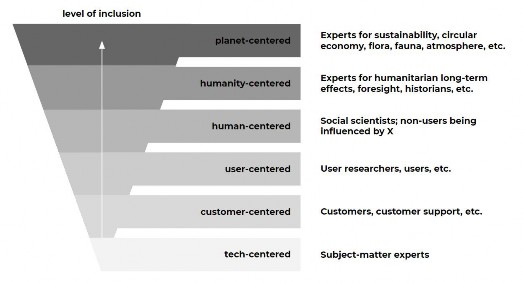
Figure 8. Inclusion in innovation
To summarize, I believe there is a need for a richer, more realistic and more grounded representation of the investigated world today and the desired future worlds as the very basis for good innovation. Instead of starting with the problem, the technology or the human, I think we should much rather start with the worlds we want to live in, the kind of rules and values that should guide activities and technologies in these desired worlds, and then invent products and services as a means to contribute to building such worlds.
TARGET WORLDS AS A NEW STARTING POINT
As a reaction to the aforementioned problems, I propose a new innovation framework called Target Worlds – as a humble attempt to deal with formerly described problems in innovation. Target Worlds, as a framework, recognizes the importance of balancing problem focus with the imagination of better worlds (the imagination in Target) based on contextual circumstances (the multiplicity in Worlds) and holistic sustainability (the holism in World). It urges the innovator to choose a different starting point. Instead of centering around the emerging technology, the human or the user, Target Worlds asks the innovator to go beyond and involve greater good futures as a set of rules for the future worlds in the making and, hence, also for the innovation process to come. It grounds innovation work in present human-technology interactions while investigating the images of desired futures in an inclusive and participatory manner.
While contributing to more holistic sustainable innovation, I am also convinced that Target Worlds will help companies develop competitive advantages. By understanding the worlds for which companies build products & services, they understand how those might integrate into socio-technical networks in the future. This will enable companies to create lock-in effects for their products & services, which in turn might secure the company’s market position in the long-run. By understanding the connections and interdependencies for the bigger picture, partnerships and network effects will be easier to achieve.
Worldbuilding
One of the disciplines that has mastered the inclusion of experts in the process of creating futures is worldbuilding. It is the approach that any good fiction or science-fiction author and filmmaker uses to set the parameters within which the plot can evolve. Think about the Star Wars underwater world, Otoh Gunga (Jar Jar Binks’ home world). As George Lucas pointed out, when building such a world, you have to think things through:
The whole culture has to be designed. What do they believe in? How do they operate? What are the economics of the culture? (…) you have to have thought it through, otherwise, there’s – something always rings very untrue or phony about what it is that’s going on.
(George Lucas about Otoh Gunga, in an interview with Bill Moyers 1999)
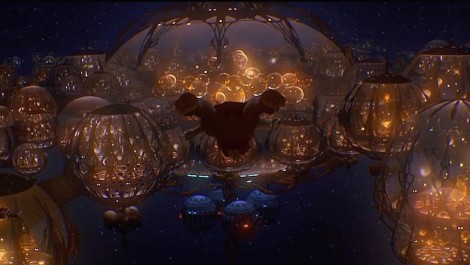
Figure 9. The underwater world ‘Otoh Gunga’ (Source: starwars.com)
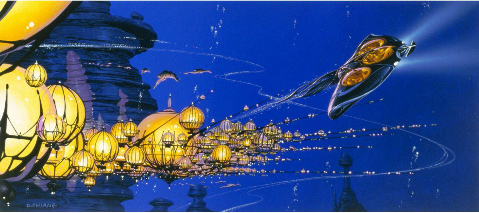
Figure 10. Otoh Gunga concept art by Doug Chiang (Source: reddit.com)
Building future worlds has to be a collaborative and interdisciplinary exercise in which “you want to conceive of how things work as a system as opposed to a linear way” (Karlin 2014). When done right, worldbuilding “asks questions that speak honestly to the issues facing our own world, trains us to ask what-if’s well, allows us to picture outwards, and sparks us into action.” (Hollon 2018). This is when “worldbuilding transcends from imaginative entertainment to applied imagination” (ibid.) and that is why worldbuilding has become a truly powerful tool for innovation. Big corporations like Intel, Nike or Boeing, and more have attended science fiction conferences to participate in worldbuilding workshops due to the very fact that it “encourages non-linear thinking, interdisciplinary collaboration” and system-thinking (Karlin 2014). Several real-life innovations have sprung from imagined future worlds, such as Minority Report, which resulted in about 100 patents (McDowell 2021) or Star Trek or the envisioned space colonization scenarios by NASA, which resulted in several everyday life products.
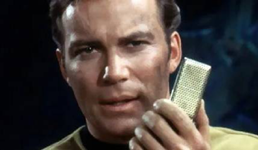
Figure 11. Star Trek (Source: startrek.com)
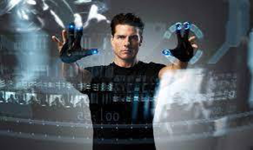
Figure 12. Minority Report (Source: arstechnica.com)
Worldbuilding has expanded its influence over the years and moved from media (books, movies, etc.) to education (games, labs, etc.) and finally arrived at innovation to help imagine and experience future worlds. In the following, I hope to point out how anthropology can contribute to this process.
BUILDING TARGET WORLDS
The following sections will outline the process of building target worlds in four steps:
- Understand your reference world
- Explore desired futures & enchant your target world
- Build your target world
- Build for your target world
Scoping Target Worlds
Building target worlds is not about passively experiencing what’s coming, or trying to anticipate what might be, but about taking up an active role in defining a desirable future world version. The obvious elephant in the room is “desirable for who?” With that it becomes entirely clear that building target worlds is not about building the future world for the entire planet, or even for your entire country.
Target Worlds is about more local worlds, which might be as large as a part of the city, an entire district, a village, a co-living building or just a coffee place. A target world always entails several dimensions (e.g. internal, embodied, external and your digital world – see Haines 2017) and can be multisited (so different physical and virtual spaces – see Marcus 1995). Most certainly it will share brother and sister worlds with very similar traits, which your target world might also work for. Key is that you start with some sort of limited scope, which you can later continuously build onto, compare with similar worlds, and eventually expand.
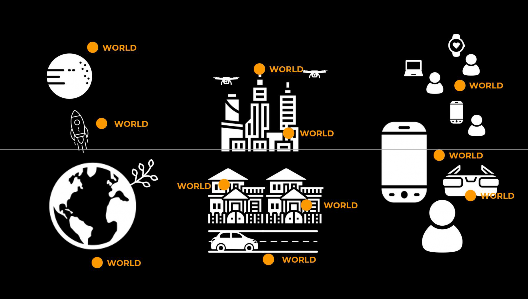
Figure 13: Multidimensionality and multisitedness of worlds
As the visualization above shows, worlds can be anywhere, on mars, in the rocket to get there, on earth, in a building, on a drone landing spot on the roof, in a family home, on the streets, in your phone on Instagram, in a computer game, in virtual reality or between multiple devices like your notebook, phone and smartwatch. It is really up to you where you draw the line to start with. Most certainly you will realize throughout the process that your scope has to be expanded on. Contrary to limiting scope, Target Worlds is all about identifying the right scope over time. Start small with understanding your local world first and expand later.
1 – Understand Your Reference World
Already back in 1939, in his essay ‘On Fairy-Stories’, J.R.R Tolkien differentiated between primary and secondary worlds (Tolkien 1947). The primary world is the real world, while the secondary world is the one existing in the mind of the fairy tale’s author. Some worldbuilders start with a blank sheet of paper and try to imagine the secondary world from scratch (e.g. J.R.R Tolkien with Lord of the Rings). Others try to connect the real world to the imagined one (e.g. C.S. Lewis with The Chronicles of Narnia).
Since we want to contribute to a more sustainable and inclusive future world version, we need to start with our current one as a reference. One of the keys to succeed in worldbuilding, thus, is to ground your future assumptions in the real world that exists out there. When it comes to the matter of figuring out what kind of world would be desirable for all actors involved there is simply no way around this step. A simple survey asking what they wish for will not cut it. You have to get out there, feel the different situations, feel how they are in the world, how they embody it, how they collectively connect to it and why they feel a sense of belonging. You need to be out there in the world.
One of the recent projects of the USC School for Cinematic Art was Dry City, which played with the imagination that water could be “privatized, commodified and transformed into a new currency” as the result of a global economic disaster (Hollon 2018). To achieve more realistic images of the future, “student architects, interactive media designers, musicians, engineers, urban planners, animators, filmmakers and artists (…) collaboratively envisioned multiple interlocking and holistic aspects of the future world, [based on] deeply grounded research into real present-day Lagos” (ibid.). They conducted literature research, video analysis and interviews with locals and experts from various fields (ibid.) as the very basis for their entire concept. This is where anthropology can be of immense value.
To understand your target’s primary world, we have to dive into some of the basic social theories about socio-technical worlds. The spaces we live in, the communities we belong to, the rituals and transformations we go through – altogether define the individual and constantly shaping worlds we experience, with a multitude of entanglements and actors. The following three theoretical thoughts I would like to offer as a sort of a basis for innovators to engage with. Certainly anthropology, and other disciplines provide much more to dive into, which cannot be covered in a single page.
Phenomenology And Life-Worlds
Phenomenology is the study and description of experiences (phenomena) and how they shape our everyday life and our understanding of the worlds we find ourselves in. According to phenomenology, our worlds include social, perceptual, and practical experiences, which we interpret and thereby contribute to our so-called life-worlds.
The life-world is basically our personal world version. It is a little bit like the bubble each of us naturally lives in, which we construct – willingly or not – around us. Unavoidingly, our ‘bubble’ constantly interacts, overlaps and collides with the ‘bubbles’ of others. These lifeworlds are what innovators need to research, provoke and challenge, especially when trying to inform a future world version. By studying the life-worlds of people, meaning their interpretation and construction of reality today combined with their desires, aspirations and images for tomorrow, innovators will learn much about potential values, rules and expectations for new innovation (without necessarily focusing on the problem – right away or at all). Relevant authors of related thinking include e.g.: Edmund Husserl, Martin Heidegger, Alfred Kraus, Maurice Merleau-Ponty, and Hubert Dreyfuß.
Actor-Network-Theory
As the name suggests, actor-networks are central to this theoretical thought. Basically, it understands the world as a system of different human and non-human actors that are connected in a multitude of ever shifting networks which in turn translate into various forms and outcomes. Consequently any thing, any technology, any community or world (if you will) is simply the sum of all human and non-human actors involved, which often remain hidden to the viewer at first. An often referred example for this is a blackbox, which is by definition not possible to understand unless opened up. For the understanding of your primary world, this means that you should map the actors in your world, sketch their relations and interactions, and thereby try to uncover insights that remained invisible to you before. Relevant authors of related thinking include e.g.: Bruno Latour, Michel Collon, Madeleine Akriech, and John Law.
Post-phenomenology & Human-Technology-World Relations
According to postphenomenology, we can distinguish between several different human-technology-world relations which innovators can use to understand socio-technical interdependencies. These relations build on the concept of technological mediation, which e.g. Merleau-Ponty has demonstrated in his blind person’s cane example. This he argued, the blind person embodies as an extension of the arm to feel, see and interact with the environment – thus the cane mediates the experience of the world around (Merleau-Ponty 1962). Something similar happens with a bike that we use to enhance our motor skills but also to feel the ground beneath us; or a smartphone speaker that translates electricity into a magnetic field and into movements compressing air, which we sense as sounds; or sensors of the semi-autonomous car (e.g. radars, lidars, ultrasonic sound sensors, etc.) helping us perceive our environment beyond our own human capabilities, yet not fully disengaging us from interacting with our surroundings, nor disabling our own senses from feeling the ride as a whole-body experience (Rasmussen et. al. 2016). Thus, technology enhances human capabilities but also engages humans in new ways of experiencing our worlds. By studying and envisioning these mediations, the anthropological innovator develops a micro-level understanding of socio-technical interplays, which will very much guide the outcome of innovation projects and might help to expect certain forms of user adoptions.
Post-phenomenology has introduced seven human-technology-world relations including: the embodiment relation; the hermeneutic relation; the altery relation; the background relation; the cyborg relation; the immersion relation; and augmentation; all of which can be used to understand how humans, technologies and the world surrounding both are connected and influence each other. Relevant authors of related thinking include e.g.: Maurice Merleau-Ponty, Don Ihde, and Peter Paul Verbeek.
The above described theoretical concepts are just a few of many which anthropologists use or think about in their everyday work. Others worth looking into include concepts of belonging, meaning, value, rituals, society, institutions, and many more. Subdisciplines include business anthropology, design-anthropology, digital anthropology, with several valuable methodologies that have been developed and practiced over decades precisely to understand known and unknown worlds.
To make all of this more digestible, with Target Worlds I created a first version guide that hopes to help innovators in understanding their targeted world as a reference for the future.
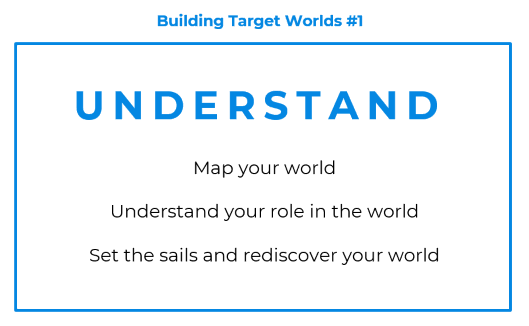
Figure 14: Building target worlds – Step 1
1.1 – Map Your World
Mapping the ecosystem, including all actors is the first step to get an overview. What ecosystems do you belong to? Map the people that live in your world, how they relate to each other, what roles they play, what tools they use, how and where they spend their time and why. Map the technologies that exist in the world and how they relate to the actors. You can use actor-network theory for mapping, human-technology-relations from post-phenomenology, mediation theory and embodiment to understand how all actors might relate to each other and what kind of effects they might have on another.
1.2 – Understand Your Role In The World
Who are you and what are your key touchpoints with the world you are part of? How do your key touchpoints relate to the rest of the world? How do you contribute to the world, how might you oppress, influence, manipulate, support and develop elements of your world? Who are the people that you serve, interact with, and what does their world look like beyond your touchpoints? Who do they interact with? What physical and virtual spaces do they engage in?
1.3 – Set The Sails And Go Rediscover Your World
To truly understand your world plan for a little bit of fieldwork. Of course interviews are better than nothing, but the really interesting things happen only once you move into the world you mapped out; once you engage with it, feel it, embody it, and observe how your map looks in reality. It is indeed a reality check. Before going out into the field, though, prepare a little bit for the future already because once in the field you can study your reference world and desires futures in one go.
2 – Explore Desired Futures & Enchant Your Target World
Michael Saler (2012) expresses the act of worldbuilding as “re-enchanting” today’s reality with detailed desires and images of alternative fictional worlds or futures. Thus, when engaging with your primary world today, make sure to study desired futures of people as well to understand how you want to re-enchant it to become your target world. It is not about scenarios, signals of what is probable or plausible, it is about one’s imagination of better versions of future worlds. Do not focus on what is possible just yet, but also keep it realistic to some extent. Exploring your world’s desires means to engage with the current first, which you already achieve in step one.
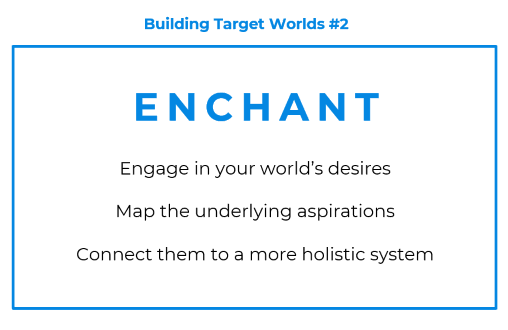
Figure 15: Building target worlds – Step 2
2.1 – Engage In Your World’s Desires
Similarly to mapping your current world, take a clean sheet of paper, and start sketching from scratch again – only now you are not alone. In step 1.3 you set your sails for field work. By now, the ship has left the harbor, and you are arriving at the island you were aiming for. With your world’s map from step 1.1 in your hand, and the “regions” you want or need to understand in more detail, you are directly heading for the future. Observe, engage in these spaces. Engage in the moments others have in your world, and try to really make sense of the way people around you feel and belong to this world. All sorts of different ethnographic tool sets can help you to achieve this. Observe, talk to the people, ask them how they experience the moment, a certain tool, a particular service, try to live through those kinds of moments with them together. Build a relationship. Every now and then look back at your map from step 1.1. and check whether your map still represents the many realities you experience whilst being part of this world. And then, when you have this relationship, take them by the hand and try to imagine the best future version they could think of – no matter whether this is 2 years from now or 20, no matter whether it involves technologies that do not exist yet, or not. This is all about dreaming the dream. Invite them for a good coffee, tea or drink, take out your map or a fresh sheet of paper and run through the three levels of futures with them. What kind of macro futures do they dream of, what kind of meso futures do they picture, and what kind of micro futures seem most relevant for them? Document their futures and dreams and bring them back home.
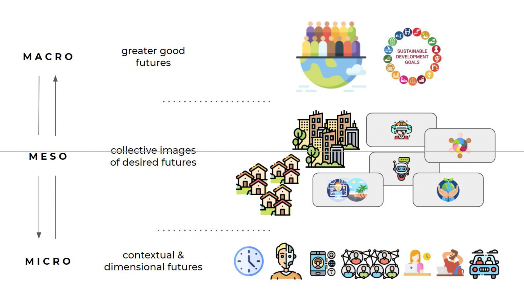
Figure 16: Three levels of desired futures
Make sure that you include at least three people from each relevant group of actors. The amount of people you need to include is entirely up to the scope of the world you focus on.
2.2. – Collectively Revise Your Reference World
After your field trip to understand your reference world and to explore desired future worlds, it is time to revise your map from step 1.1. Involve your entire research team, or even external experts, or maybe even the people you engaged with in the field. Remember the section from earlier called Responsibility. It is your power and responsibility to make sure that you involve the right actors in your innovation network.
First, double check whether your map actually still represents the world you experienced, or whether you realize that you got something slightly wrong before. Does your map represent only your perspective of the many subworlds out there or does it already look like a good representation of the many different lifeworlds you got to know in your field trip earlier? Does it miss something? Did you miss something? Discuss in a group or in break outs what you learned from your field trip and how your map of your reference world has changed. Beware of confirmation bias.
2.3 – Collectively Map Your Desired Futures
In the same group, put all your notes, pictures, videos, and maps on the table and reposition them so you form clusters of shared desirable futures and those that might contradict each other. Analyse and map out the big clusters of desired futures that you collected on your fieldtrip. Try to make sense of what this means: what kind of values, aspirations, big change requests, concerns and fears can you read out of it? What does it tell you about the collective images of desired futures your reference world entails? Try to prioritize and list desired futures clusters in a way that seems most important for you and the participants of your group.
3 – Build Your Target World
In the same group as the one from step 2.2 and 2.3, start building your target world now. It might be that parts of your team see different target worlds, or that you do see different elements which fit together and form one target world only. Start by preparing some basics.
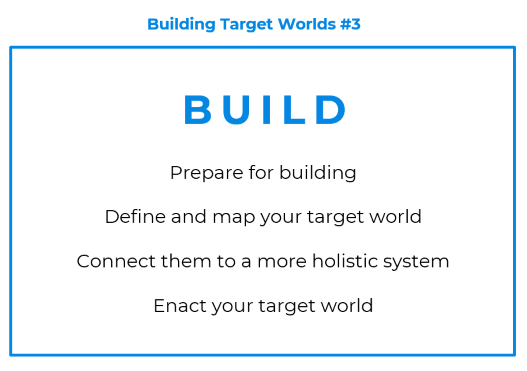
Figure 17: Building target worlds – Step 3
3.1 – Prepare For Building
First, you must agree on the tool you eventually want to use to represent your target world. Will it be a one-pager description, a short-story, a comic book with pictures, Lego Serious Play, a short movie or documentary, an architectural model or built in Sims or another computer game. It is entirely up to you. The only thing it should not end up being is a simple vision statement.
Next, agree on and prepare a process to track your decisions. Will it be a team member taking notes, will you have a dedicated worldbuilder knowing the tool you want to represent your target world in?
Agree on some limits now. How many years from now will your target world exist? Where will it exist? What kind of people will be there (remember to stay close to your insights from step 1 and 2). Set some limits and agree on a bit of scope so your group does not astray too much through the process.
3.2 – Define And Map Your Target World
Now it is time to start the building process. In your group, start by sketching the landscape of your target world. Is it a village, a coffee place, an entire city, a virtual world? Draw some borders to define your new map you want to fill. Next to your new map, look at your results from step 1 and 2 and create some of the characters and main actors (human and non-human) that will play main roles in your target world.
List the macro drivers, rules and goals of your world, the meso level with relations between humans and technologies, what they value and what relations mean to them, as well as the micro interactions, feelings and emotions your target world should be filled with.
3.3 – Materialize Your Target World
As said before, it is up to you and your innovation network but now it is time you start materializing your target world. How you do this depends on your choice. The following provides a short list of examples for how you might materialize your target world:
- Short story written descriptions
- Pen & paper sketches, paintings
- Lego etc.
- Handcrafted models
- Board games
- Software
- Computer games
- Virtual reality
- A screenplay
- Short video clips
- Movies
The students from Dry City, for example, combined a “wide range of media and platforms, including app prototypes, physical artefacts, photography, and web-based graphic design, fictional blogs, a film festival and experimental social media storytelling” (Hollon, 2018). Some of these are shown below.
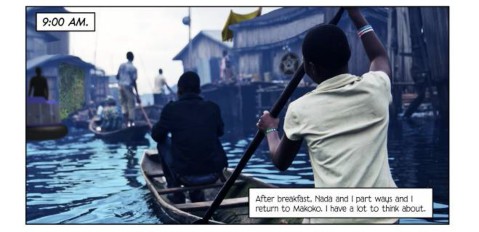
Figure 18: Dry City representation 1.1 as a comic (Source: Long 2016)
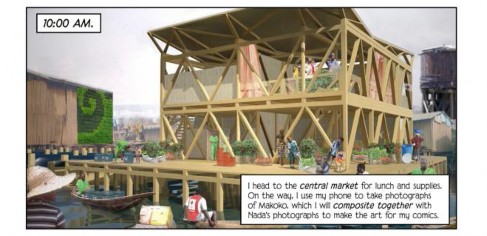
Figure 19: Dry City representation 1.2 as a comic (Source: Long 2016)
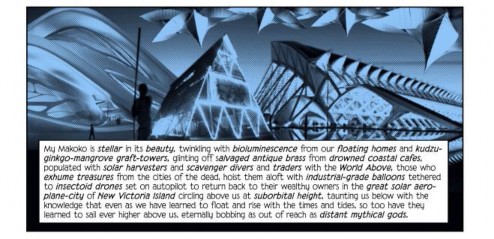
Figure 20: Dry City representation 1.3 as a comic (Source: Long 2016)
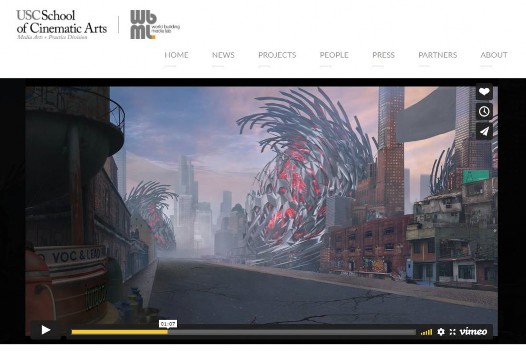
Figure 21: Dry City representation 2 as a short video (Source: Dawson 2016)
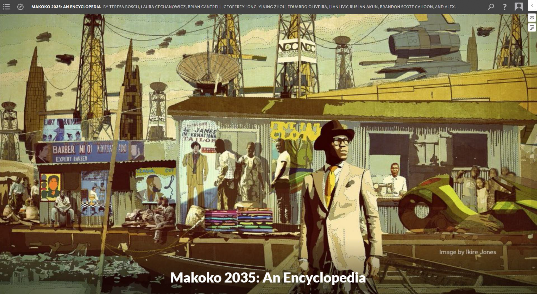
Figure 22: Dry City representation 3 as an encyclopedia (Source: Bosch et. al. 2021)
3.4 – Enact Your Target World
As a last step in the process of building your target world, enact it: try to find out how it would feel to experience this target world. Use your outcome from step 3.3 and really try to get immersed in your target world. At Dry City, “each student developed a character and then envisioned a day in their character’s life, imagining everything from the contents of a character’s purse to their daily routine from hour to hour” (Hollon, 2013). This helped them to develop a form of empathy for how it might feel to live in this world in the future. Other forms of enacting your target world might include role playing. virtual reality scenarios, story reading, dialogues and whatever helps to feel immersed in a day of your target world.
4 – Build For Your Target World
You made it. After running through all steps so far, you should have ended up with your own target world. With your target world at hand you have a more contextual, rich and detailed environment, which your new innovation should contribute to and get embedded into. The next and final step is how you prepare for building your product or service for your target world. Look at your results from step 1 and 2 and at your target world and try to define a way how your innovation will eventually facilitate the realization of your target world. Freely choose your preferred innovation approach. Due to my own current professional situation, I am close to corporate venture building which includes several steps that I find applicable for this purpose too.
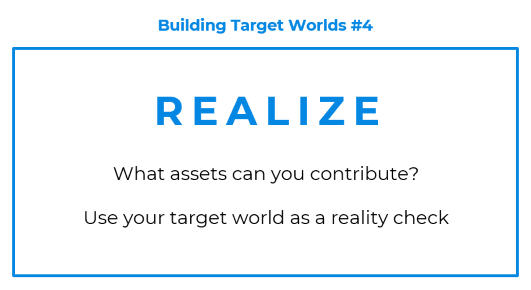
Figure 23: Building target worlds – Step 4
4.1 – What Assets Can You Contribute?
In corporate venture building, we usually consider the existing assets a corporation brings to the table, which we might want to use for a new product or service which will become the core element of a potential new company. In Target Worlds your outcome could be a product, service, a company, a building, or anything else. Essentially, though, you will have to ask yourself the same question. What assets can you utilize that will enable you to achieve your vision? What partners, supporters might you need to achieve it? How do they fit into your target world? How might they contribute to it themselves, or what might they find appealing about it so they might partner with it? This brings us back to Simon Sinek’s Golden Circle. Do those partners share the same target world, thus, purpose and vision? If not, maybe it is not the right partner.
4.2 – Use Your Target World As A Reality Check
As with any other product building process, plan a rough roadmap for building your product or service. Start with prototypes, test a lot, expect several changes along the way. Always come back to your target world representation, immerse yourself again and again, and try to check whether your current prototype, MVP or product version will actually contribute to your target world. If not, it is either not the right product to build or you have to revise your target world. Remember, though, that your target world is the future version of the world that you constantly discover and reimagine to live in, the world version to which your company or team wants to contribute to. With every research study you conduct and every product iteration you run, you uncover a new region of your world’s map that was hidden to you before, revealing new opportunity spaces to act on, but also reshaping your game strategy to play by. In this case, your target world serves you as a continuous quality control and eyeopener, which is what your target world should eventually turn into.
CONCLUSION
In my imagination – if done well – the result will look like a very famous architectural masterpiece in the center of Vienna, called ‘Hundertwasserhaus’.
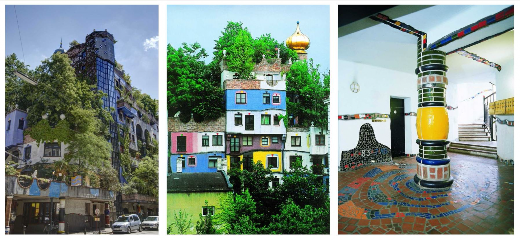
Figure 24: Hundertwasserhaus as a great example (Source: Hundertwasser.com)
This house – named after its architect – is anything but perfect from a symmetrical perspective, but it is close to perfect from a sustainability point of view.
Socially it connects people: its playful design inside the building with small playgrounds in and outside on terraces, encourages children to play, to run around in the house, visiting flats with open doors from the friends. Environmentally it offers multiple balconies solely for the planting of trees all around the building, which reduces noise pollution, breaks winds and cools the building during summer. Technologically it was built on solid bricks and due to its use of fired tiles, the facade is extra resistant to damage. Economically it was a state-financed project, which committed to lower rental prices for average citizens to be able to pay for it. I think it is a great example of an already existing target world for future housing projects, and in my opinion this is what innovation should aim to contribute to.
To conclude this paper, I hope that I have: (1) provoked the reader about some of the problems we regularly face in innovation; (2) pointed out the responsibility and power innovators have and need to utilize better; (3) explained the need for Target Worlds and how worldbuilding can help; and (4) sketched a first step by step guide of how to build your own target world as a new starting point for innovation that goes beyond target groups, problems, technology-focus and limited centeredness. I very much hope that this was a provocative nudge for you as a reader, and look forward to receiving any feedback, thoughts and ideas on how to develop this concept further.
Markus Rothmüller is a Techno-Anthropologist by training and applies anthropology in business, design and product development. He has worked in the fields of future studies, user research, corporate innovation and venture building with a special focus and passion for emerging technologies such as autonomous vehicles, smart home, digital health and wellbeing. He looks at concepts like socio-technical worlds, networks, rituals, mediation, transformation and belonging, as an add-on to the otherwise mainstream innovation frameworks.
REFERENCES CITED
Andersen, L. B., Danholt, Peter, Halskov, Kim, Hansen, N. B. and Lauritsen, Peter. 2015. “Participation as a matter of concern in participatory design.” CoDesign, 11:3-4, 250-261, DOI: 10.1080/15710882.2015.1081246
Auger, James. 2013. “Speculative design: crafting the speculation.” Digital Creativity. 24:1, 11-35, DOI: 10.1080/14626268.2013.767276
Billmoyers. 1999. “The Mythology of ‘Star Wars’ with George Lucas.” Billmoyers.com website. Accessed [September 11, 2021]. https://billmoyers.com/content/mythology-of-star-wars-george-lucas/
Blok, Anders and Elgaard Jensen, Torben. 2011. Bruno Latour: Hybrid thoughts in a hybrid world. Routledge.
Bosch et. al. 2021. “MAKOKO 2035: AN ENCYCLOPEDIA.” Scalar.usc website. Accessed [September 11, 2021]. https://scalar.usc.edu/works/makoko2035/index
Bryant, Rebecca and Knight, Daniel. 2019. The Anthropology of the Future (New Departures in Anthropology). Cambridge: Cambridge University Press.
Candy, Stuart and Kornet, Kelly. 2019. “Turning Foresight Inside Out: An Introduction to Ethnographic Experiential Futures.” Journal of Futures Studies. 23. 3-22. 10.6531/JFS.201903_23(3).0002.
Case, Amber. 2011. “We are all cyborgs now.” TedX website. Accessed [April 1, 2021] https://www.youtube.com/watch?v=z1KJAXM3xYA
Clausen, Christian and Gunn, Wendy. 2015. “From the Social Shaping of Technology to the Staging of Temporary Spaces of Innovation: A Case of Participatory Innovation.” Science Studies, 28(1), 73-94.
Clausen, Christian, Vinck, Dominik, Pedersen, Signe, and Dorland, Jens. 2020. Staging Collaborative Design and Innovation – An Action-Oriented Participatory Approach. Edward Elgar Publishing
Dawson, Joshua. 2016. “Cáustico – Watch the video.” Worldbuilding.usc website. Accessed [September 11, 2021]. https://worldbuilding.usc.edu/news/caustico/
Donelli, Federico. 2016. “It’s time for a Humanity-Centered Design.” Medium website. Accessed [September 11, 2021]. https://medium.com/@fdonelli/its-time-for-a-humanity-centered-design-59f9fa551d8e
English-Lueck, J.A., and Avery, Miriam. 2020. “Futures Research in Anticipatory Anthropology.” In Oxford Research Encyclopedia of Anthropology. Oxford University Press. doi: http://dx.doi.org/10.1093/acrefore/9780190854584.013.14.
Fiasova, Michaela. 2018. “Top interview takeaways — Thomas Wendt.” Medium website. Accessed [September 11, 2021]. https://medium.com/@Mfiasova/top-interview-takeaways-thomas-wendt-1615bd17647
Frick, Patrick and Luebkeman, Chris. 2017. “Planet-Centred Design: A Mindset Shift For Engaging Complexity.” Huffpost.com website. Accessed [April 1, 2021]. https://www.huffpost.com/entry/planet-centred-design-a-mind-set-shift-for-engaging_b_587fa87ce4b06a0baf64924e?timestamp=1484813092318&guccounter=1
Fry, Tony and Nocek, Adam. 2020. Design in Crisis – New Worlds, Philosophies and Practices. Routledge.
Glabau, Danya. 2018. “An Introduction to Cyborg Anthropology.” Ethnographic Praxis in Industry Community website. Accessed [April 1, 2021] https://www.epicpeople.org/cyborg-anthropology/
Grillo, Antonio. 2020. “Why designing great experiences is no longer enough – Design Responsibility Evolution.” Medium website. Accessed [April 1, 2021] https://medium.com/@antonio_grillo/why-designing-great-experiences-is-no-longer-enough-design-responsibility-evolution-4b861133a375
Haines, J.K. 2017. “Towards Multi‐Dimensional Ethnography.” Ethnographic Praxis in Industry Community Proceedings, 2017: 127-141. doi:10.1111/1559-8918.2017.01143; https://www.epicpeople.org/towards-multi-dimensional-ethnography/
Hollon, Sam. 2018. “Teaching Innovation: The Use of Useless Worlds.” Medium website. Accessed [September 11, 2021]. https://samhollon.medium.com/teaching-innovation-the-use-of-useless-worlds-1a97866f2631
Impossible. 2018. “A new era of Planet Centric Design.” Medium website. Accessed [April 1, 2021] https://medium.com/impossible/key-takeaways-from-sustainability-leaders-forum-1199a240d972
Jackson, Chris. 2020. “What is planet-centric design? — We Create Futures.” Wecreatefutures website. Accessed [April 1, 2021]. https://www.wecreatefutures.com/blog/what-is-planet-centric-design
Karlin, Susanne. 2014. “How World Building Will Shape The Future Of Media And Business.” Fastcompany website. Accessed [September 11, 2021]. https://www.fastcompany.com/3038146/how-world-building-will-shape-the-future-of-media-and-business
Kikin-Gil, Ruth. 2018. “Humanity-centered design.” IXDS website. Accessed [April 1, 2021]. https://interaction18.ixda.org/program/talk-humanity-centered-design-kikin-gil-ruth/
Kwame, Ferreira. 2018. “A case for planet centric design.” Medium website. Accessed [April 1, 2021] https://medium.com/impossible/a-case-for-planet-centric-design-94eca242b869
Latour, Bruno. 1987. Science in Action, How to Follow Scientists and Engineers through Society. Harvard University Press, Cambridge Mass.
Latour, Bruno. 2005. Reassembling the Social: An Introduction to Actor-Network-Theory. Oxford: Oxford UP.
Law, John. 1992. “Notes on the theory of the actor-network: Ordering, strategy, and heterogeneity.” Systems Practice 5, 379–393. https://doi.org/10.1007/BF01059830
Long, Geoffrey. 2016. “Dry City: Turning Points.” Worldbuilding.usc website. Accessed [September 11, 2021]. https://worldbuilding.usc.edu/news/dry-city-turning-points/
Marcus, G.E. 1995. “Ethnography in/of the World System: The Emergence of Multi-Sited Ethnography” Annual Review of Anthropology. 24:1, 95-117
Merleau-Ponty, Maurice. 1962. Phenomenology of Perception. Routledge.
McDowell, Alex. 2021. “ALEX MCDOWELL, R.D.I.” Worldbuilding.usc website. Accessed [September 11, 2021]. https://worldbuilding.usc.edu/people/bio/alex-mcdowell/
Palaveeva, Emilia. 2018. “Humanity Centered Design: Why human centered design is no longer enough.” Slideshare website. Accessed [April 1, 2021]. https://www.slideshare.net/EmiliaPalaveeva/humanity-centered-design-why-human-centered-design-is-no-longer-enough-and-what-to-do-about-it-114314993
Patel, Cassandra and Jera, Mondy. 2018. “Towards a model of planet-centred design?” Thinkplaceglobal website. Accessed [April 1, 2021] https://www.thinkplaceglobal.com/insights/towards-model-planet-centred-design
Payne, John. 2020. “Post–Human-Centered Design: Evolving to a Societal Scale.” Ethnographic Praxis in Industry Community website. Accessed [April 1, 2021]. https://www.epicpeople.org/tutorial-post-human-centered-design/
Pedersen, Signe. 2020. “Staging Negotiation Spaces: A co-design framework.” Design Studies. 68, p. 58-81 24 p.
Pink, Sarah. 2017. “Researching future as an alterity of the present.” In Anthropologies and Futures: Researching Emerging and Uncertain Worlds, edited by J. F. Salazar, S. Pink, A. Irving, J. Sjoberg, 133-150. Routledge.
Pink, Sarah. 2019. “Prof Dr Sarah Pink: Futures anthropology, emerging technology and anticipating experience”. Youtube. Accessed [September 11, 2021]. https://www.youtube.com/watch?v=0h9R0o0CCmo
Rasmussen, Pernille, Sangari, Ahmed., Taniberg, Aleksandra., Retoft, Mads, Rothmüller, Markus. and Vendelbo-Larsen, A. S. 2016. “A Socio-Technical Perspective on Autonomous Vehicles.” Aalborg University Copenhagen.
Salazar, J. F., Pink, Sarah, Irving, Andrew, and Sjöberg, Johannes. 2017. Anthropologies and Futures – Researching Emerging and Uncertain Worlds. London; New York: Bloomsbury.
Sinek, Sinek. 2011. Start with Why: How Great Leaders Inspire Everyone to Take Action. Penguin
Slavin, Kevin. 2016. “Design as Participation.” Journal of Design and Science. https://doi.org/10.21428/a39a747c
Textor, Robert B. 1980. A handbook on ethnographic futures research. Stanford, CA.: Cultural and Futures Research Project, School of Education and Dept. of Anthropology, Stanford University. http://catalog.hathitrust.org/api/volumes/oclc/8910944.html.
Saler, Michael. 2012. As If: Modern Enchantment and the Literary Prehistory of Virtual Reality. New York: Oxford University Press.
Schubert, Anton. 2019. “Planet Centric Design – The Only Way Forward.” Vincit website. Accessed [April 1, 2021]. https://www.vincit.fi/en/planet-centric-design-the-only-way-forward/
Tolkien, J.R.R. 1947. “On Fairy-Stories.” Oxford University Press.
Wendt, Thomas. 2015. Design for Dasein: Understanding the Design of Experiences. Thomas Wendt
Wren, C. 2018. “Brands Must Move To Humanity-Centered Design.” Branding Strategy Insider. Accessed [April 1, 2021] https://www.brandingstrategyinsider.com/brands-must-move-to-humanity-centered-design/#.XtQwMDozaUk
